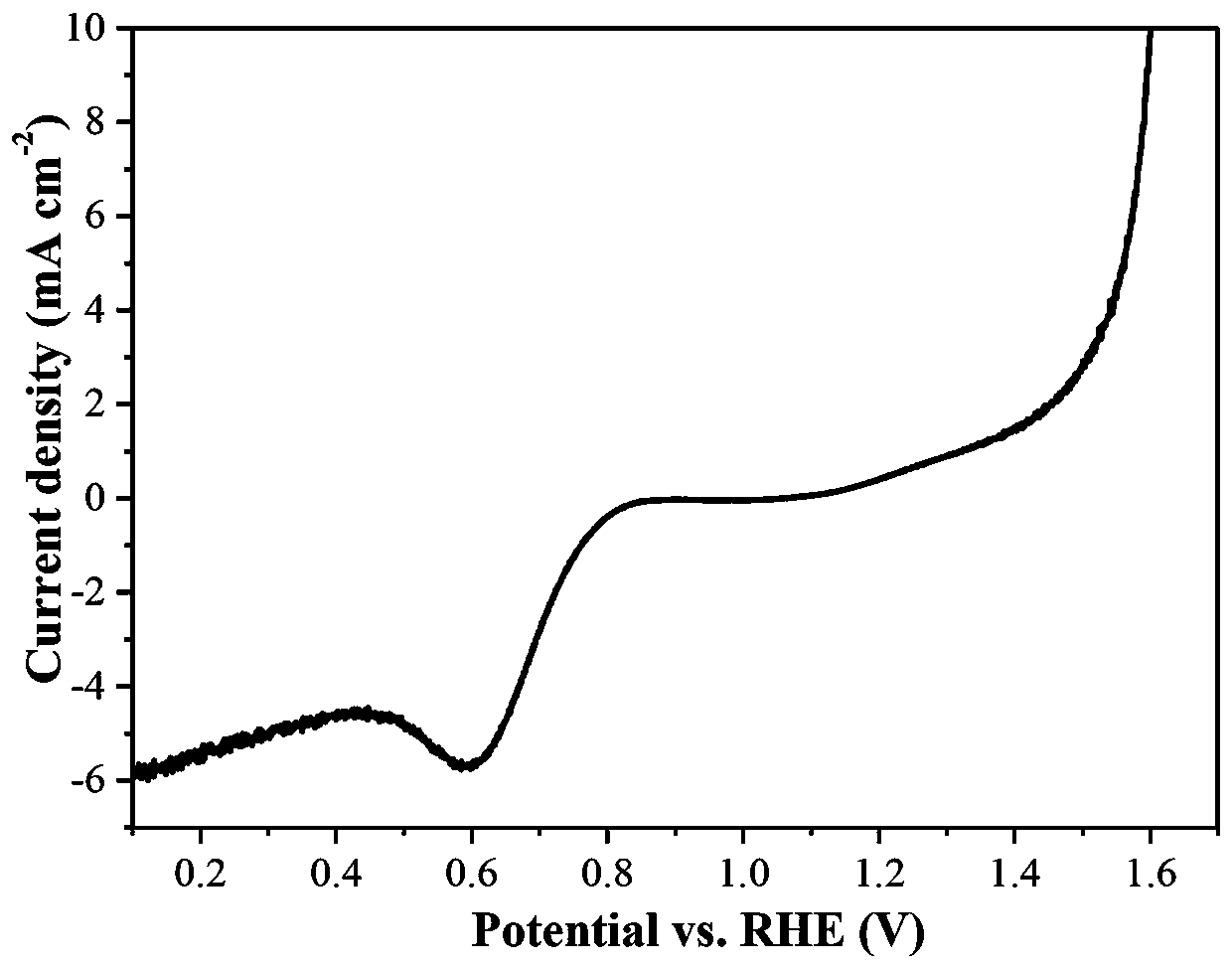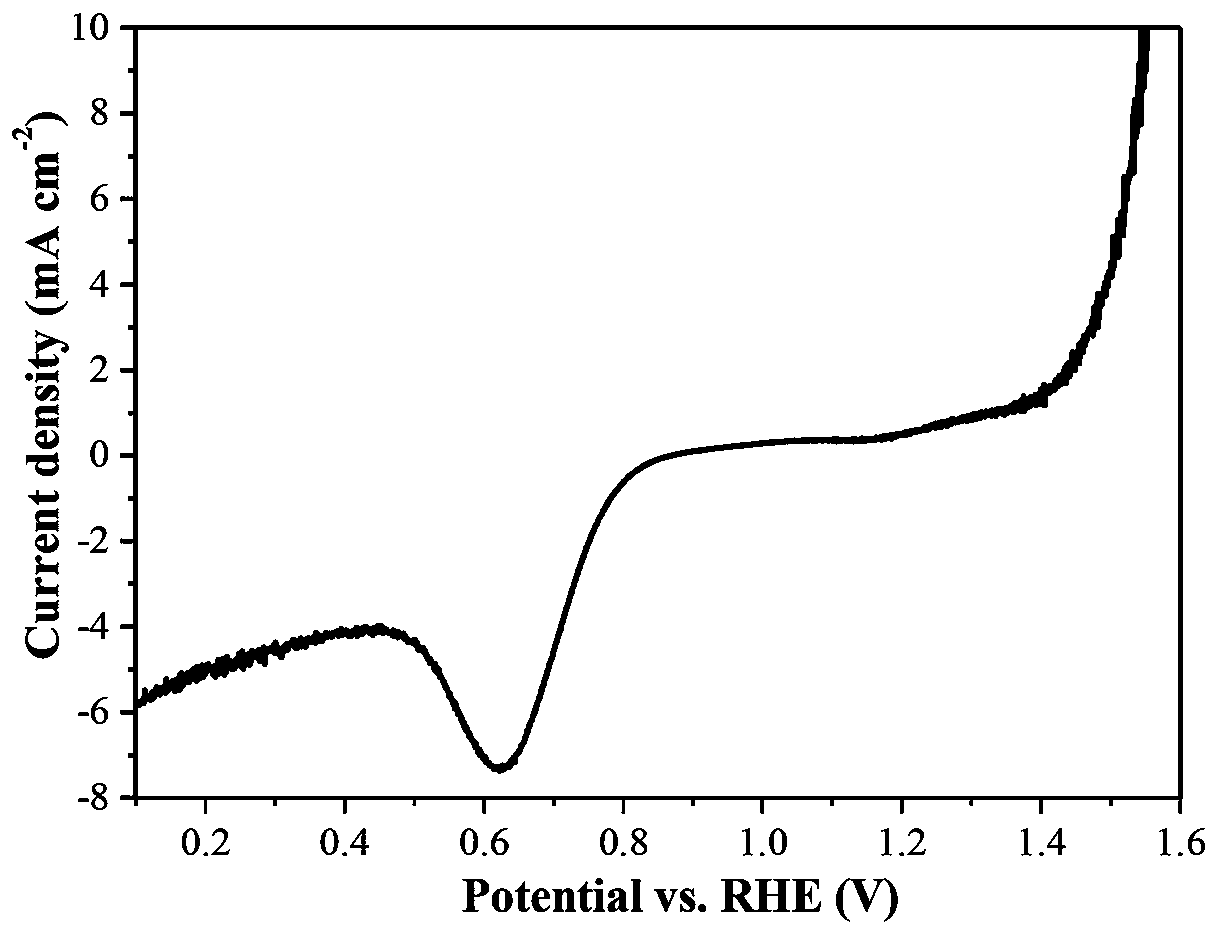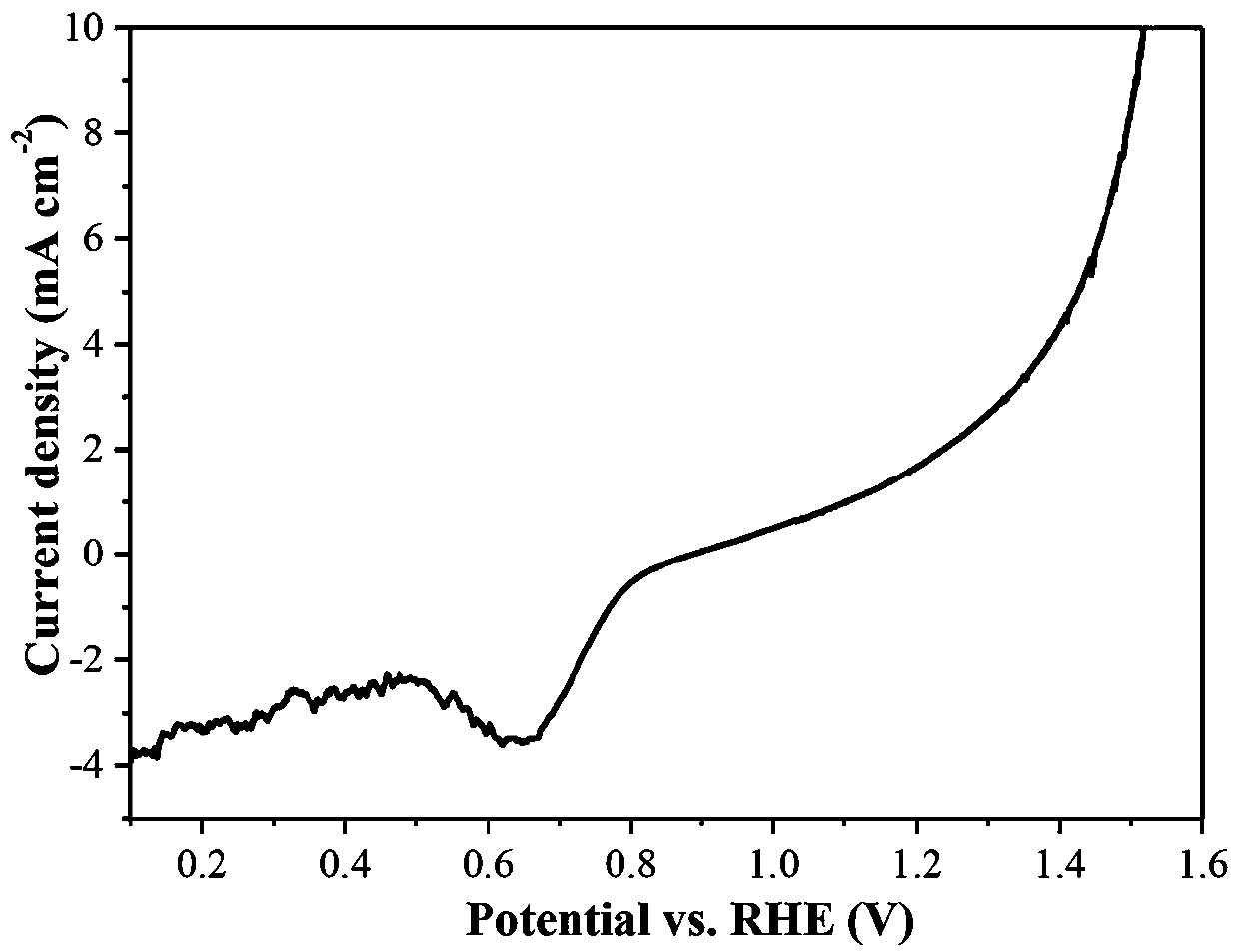Preparation method of cobalt sulfide and nitrogen-doped carbon composite array electrode
A nitrogen-doped carbon, composite array technology, applied in chemical instruments and methods, electrodes, electrolysis processes, etc., can solve the problems of high cost, limited comprehensive use of electrocatalysts, lack of resources, etc., and achieve the effect of good catalytic performance.
- Summary
- Abstract
- Description
- Claims
- Application Information
AI Technical Summary
Problems solved by technology
Method used
Image
Examples
Embodiment 1
[0027] At room temperature, 0.15 M CoCl 2 ∙ 6H 2 O, urea with a mass fraction of 6.25% was dissolved in 40 mL of deionized water. The carbon paper was soaked in the solution, reacted in a water bath at 90 °C for 2 h, cooled naturally to room temperature, the carbon paper was taken out, rinsed with deionized water three times, and dried for later use. CFP / Co 3 o 4 , and then the CFP / Co 3 o 4 CFP / CoS 2 . CFP / CoS 2 Soak in 50 mL of Tris base with a concentration of 0.01 M and a pH of 8.5, add 25 mg of dopamine, stir at room temperature for 24 h, rinse the sample three times with deionized water and dry to obtain CFP / CoS 2 @PDA. CFP / CoS 2 @PDA was placed in a tube furnace, reacted at 350 °C for 2 h under Ar flow, then continued to heat up to 700 °C for 2 h, cooled naturally to room temperature, and then took it out to obtain CFP / Co 9 S 8 -Co 4 S 3 @C in situ electrodes.
[0028] figure 1 The OER and ORR linear voltammetry sweep (LSV) diagrams of the electrode prep...
Embodiment 2
[0030] At room temperature, 0.15 M CoCl 2 ∙ 6H 2 O, urea with a mass fraction of 6.25% was dissolved in 40 mL of deionized water. The carbon paper was soaked in the solution and reacted in a water bath at 90 °C for 2 h, cooled naturally to room temperature, the carbon paper was taken out, rinsed with deionized water three times, and dried for later use. CFP / Co 3 o 4 , and then the CFP / Co 3 o 4 CFP / CoS was obtained by reacting at 500°C for 60 min under the airflow of sulfur powder (0.5g) 2 . CFP / CoS 2 Soak in 50 mL of Tris base with a concentration of 0.01 M and a pH of 8.5, add 40 mg of dopamine, stir at room temperature for 24 h, rinse the sample three times with deionized water and dry to obtain CFP / CoS2 @PDA. CFP / CoS 2 @PDA was placed in a tube furnace, reacted at 350 °C for 2 h under Ar flow, then continued to heat up to 700 °C for 2 h, cooled naturally to room temperature, and then took it out to obtain CFP / Co 9 S 8 -Co 4 S 3 @C in situ electrodes.
[0031]...
Embodiment 3
[0034] At room temperature, 0.15 M CoCl 2 ∙ 6H 2 O, urea with a mass fraction of 6.25% was dissolved in 40 mL of deionized water. The carbon paper was soaked in the solution and reacted in a water bath at 90 °C for 2 h, cooled naturally to room temperature, the carbon paper was taken out, rinsed with deionized water three times, and dried for later use. CFP / Co 3 o 4 , and then the CFP / Co 3 o 4 React at 500°C for 60 min under the airflow of sulfur powder (0.5 g) to obtain CFP / CoS 2 . CFP / CoS 2 Soak in 50 mL of Tris base with a concentration of 0.01 M and a pH of 8.5, add 60 mg of dopamine, stir at room temperature for 24 h, rinse the sample three times with deionized water and dry to obtain CFP / CoS 2 @PDA. CFP / CoS 2 @PDA was placed in a tube furnace, reacted at 350 °C for 2 h under Ar flow, then continued to heat up to 700 °C for 2 h, cooled naturally to room temperature, and took it out to obtain CFP / Co 9 S 8 -Co 4 S 3 @C In situ electrodes.
[0035] image 3 ...
PUM
 Login to View More
Login to View More Abstract
Description
Claims
Application Information
 Login to View More
Login to View More - R&D Engineer
- R&D Manager
- IP Professional
- Industry Leading Data Capabilities
- Powerful AI technology
- Patent DNA Extraction
Browse by: Latest US Patents, China's latest patents, Technical Efficacy Thesaurus, Application Domain, Technology Topic, Popular Technical Reports.
© 2024 PatSnap. All rights reserved.Legal|Privacy policy|Modern Slavery Act Transparency Statement|Sitemap|About US| Contact US: help@patsnap.com










